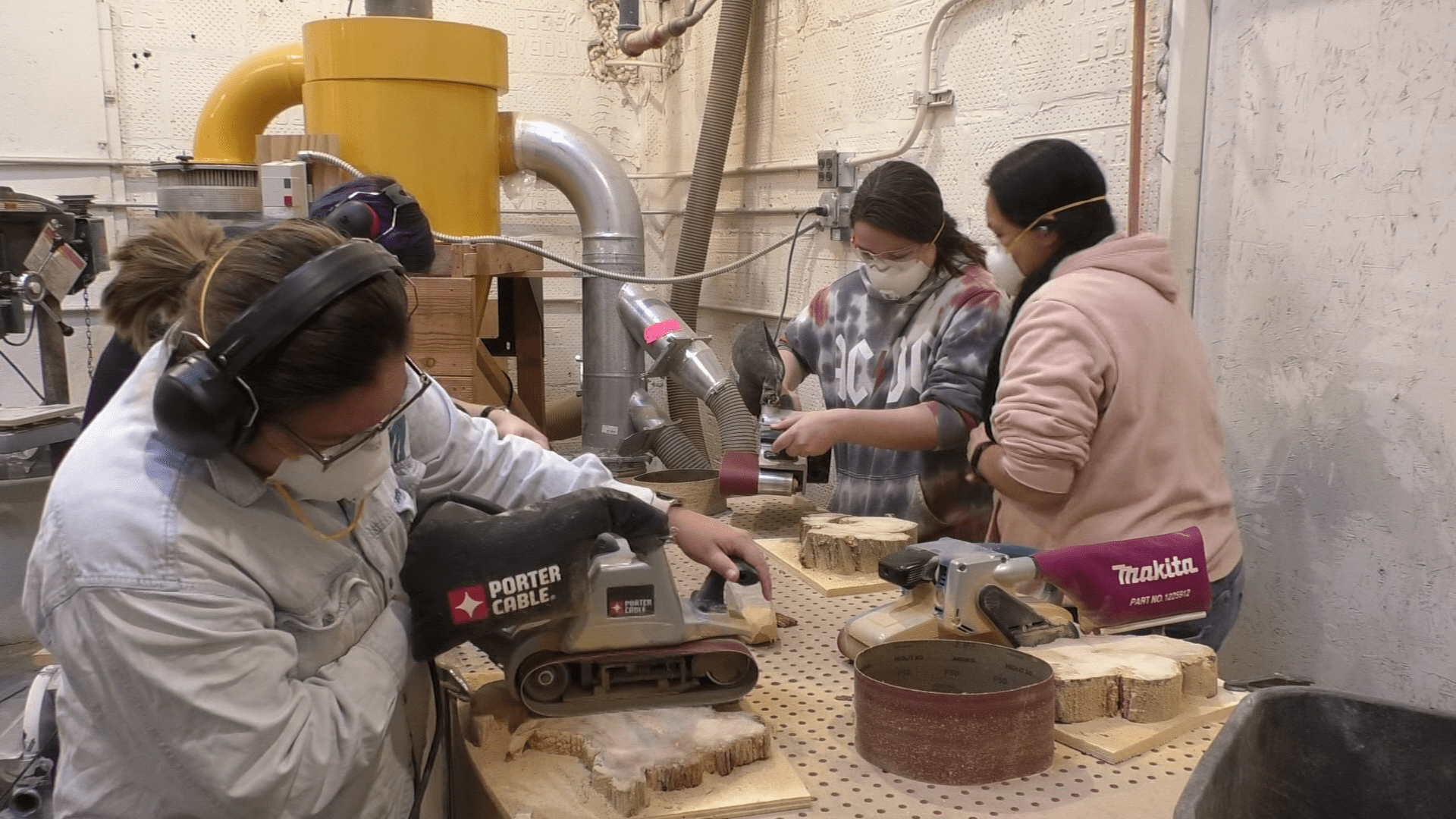Students work together for Red Pine slab preservation
Today Duluth MakerSpace hosted a professor-led student group working to preserve and study remnants of old growth Red Pine they collected on Minnesota Point and Wisconsin Point.
“So we understand that people believe that fires started by lightning strikes on the points of trees. But being that there was Ojibwe people on the land, living in the area, we’re trying to show that these fire scars cultural modifications. Trees are the result of the addition of air and the way people were living in the area. So we’re taking these samples and kind of sanding them down to show the tree rings and some of the peel marks. Ultimately we’re trying to date them and hope to present our research in the future. So today we’re in the process of sanding them down to get to that point,” says Valerie Zhaqwendaagozikwe a student at Fond du Lac Tribal and Community College.
Students from both Fond du Lac Tribal and Community College and the University of Minnesota Duluth worked with their mentor Evan Larson, a professor from the University of Wisconsin-Platteville, to sand a collection of cross sections gathered from the stumps of long dead- red pine trees that grew on both points. The trees carry stories of passing fires that burned across the points, leaving distinct marks within their rings that can be interpreted to identify the exact year, and often times the season, during which these fires burned.
“I believe that a lot of the elements in the world we’re given, you know, are here as gifts. Fire is a gift to us. And to be able to work in a partnership with fire in the forest and to be able to maintain, we have to learn how to work with it and to be able to say, hey, this is important to us. We would like to show the world and other people this. And so to me, it’s pretty important to build and look to the trees, to the fire and say we did this, it’s here,” continues Zhaqwendaagozikwe
Through the cross sections of the trees, students hope to learn a more complete and centuries-long history of fire on Zhaagawaamikong-neyaaashi, and how these past fires played a key role in shaping the pine forests on both points, and how the occurrence of past fires is an expression of Anishinaabe stewardship that promoted plants such as blueberries and other medicines through the mindful use of prescribed fire.
